Grow Kohlrabi at Home? Absolutely! You might be thinking, “Kohlrabi? What is that, and why would I want to grow it?” Well, let me tell you, this quirky-looking vegetable, sometimes called a “German turnip,” is a hidden gem in the gardening world, and I’m here to show you how surprisingly easy it is to cultivate your own delicious crop right in your backyard.
Kohlrabi has a fascinating history, dating back to ancient Rome, and it’s been a staple in European cuisine for centuries. But don’t let its somewhat unusual appearance intimidate you! Think of it as a cross between a cabbage and a turnip, with a mild, slightly sweet flavor that’s incredibly versatile.
Why should you bother learning to grow kohlrabi at home? Because fresh, homegrown kohlrabi is simply unbeatable! Store-bought varieties often lack the crispness and delicate flavor of freshly harvested ones. Plus, growing your own allows you to control the growing conditions, ensuring you have organic, healthy produce for your family. In this DIY guide, I’ll share my favorite tips and tricks for successfully growing kohlrabi, even if you’re a complete beginner. Get ready to discover the joy of harvesting your own unique and delicious vegetable!
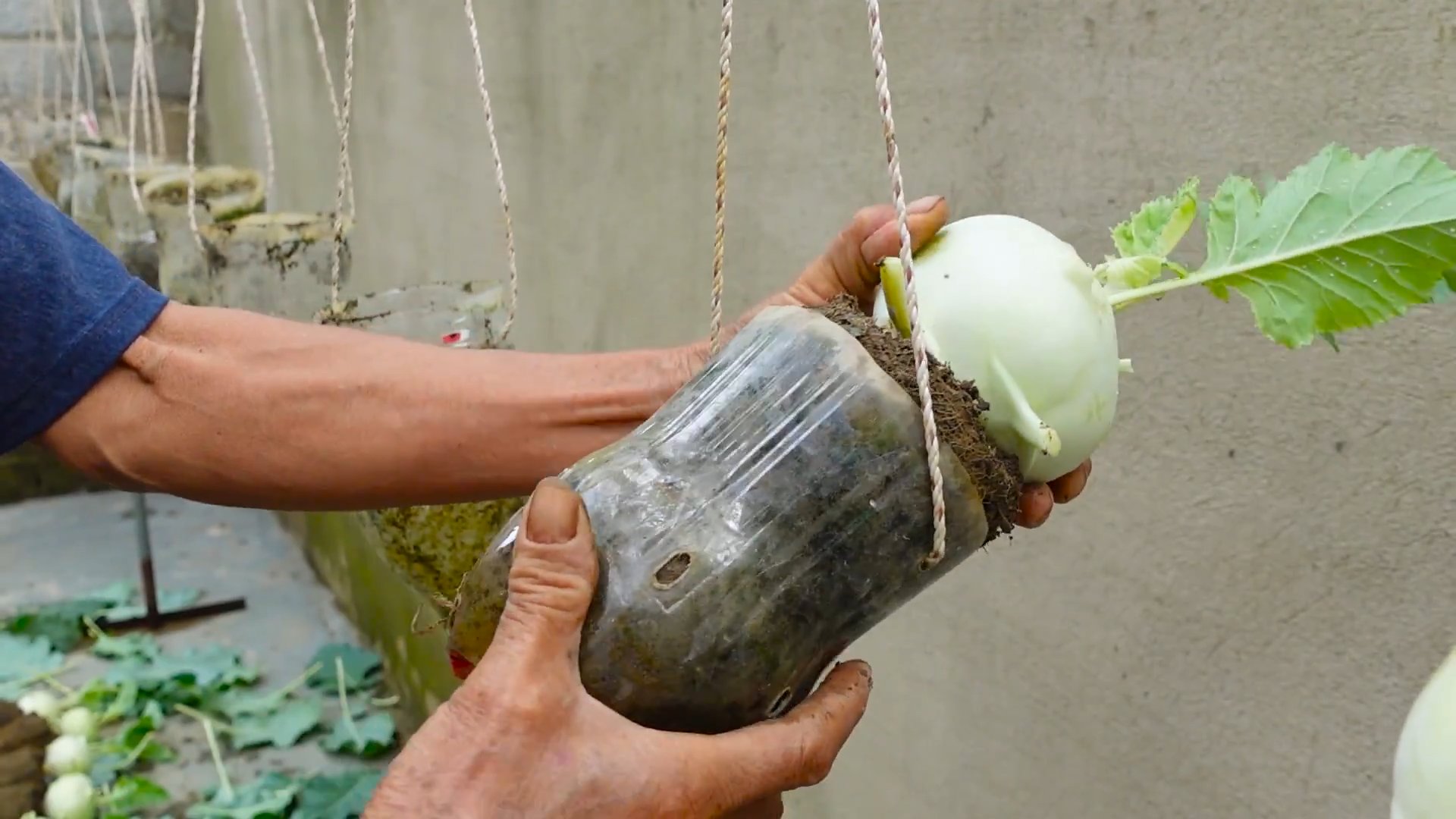
Growing Kohlrabi: A Beginner’s Guide to This Unusual Veggie
Hey there, fellow gardening enthusiasts! Ever heard of kohlrabi? It’s that quirky-looking vegetable that resembles a spaceship or a turnip from another planet. But don’t let its appearance fool you – kohlrabi is incredibly delicious and surprisingly easy to grow at home. I’m going to walk you through everything you need to know to cultivate your own crop of these crunchy, sweet delights.
What is Kohlrabi, Anyway?
Before we dive into the how-to, let’s talk about what kohlrabi actually is. It’s a member of the cabbage family, but instead of forming a head like cabbage, it develops a swollen stem just above the ground. This stem is the part we eat, and it tastes like a cross between a turnip and a cabbage, with a slightly sweeter, milder flavor. You can eat it raw, cooked, or even pickled!
Choosing Your Kohlrabi Variety
There are several kohlrabi varieties to choose from, each with its own unique characteristics. Here are a few popular options:
- Early White Vienna: A classic variety that matures quickly and produces pale green bulbs.
- Early Purple Vienna: Similar to the white variety, but with a beautiful purple skin. The flesh is still white.
- Grand Duke: A hybrid variety known for its large size and excellent flavor.
- Kossak: Another large hybrid variety that’s resistant to bolting (going to seed prematurely).
I personally love growing both the Early White and Early Purple Vienna varieties for their vibrant colors and reliable yields.
Getting Started: Planting Kohlrabi
Kohlrabi is a cool-season crop, which means it thrives in cooler temperatures. Here’s how to get your kohlrabi journey started:
When to Plant
* For a spring harvest: Start seeds indoors 4-6 weeks before the last expected frost. You can also direct sow seeds outdoors 2-3 weeks before the last frost.
* For a fall harvest: Direct sow seeds outdoors 6-8 weeks before the first expected frost.
I usually start my spring kohlrabi indoors to get a head start, especially if I’m aiming for an early harvest.
Where to Plant
* Sunlight: Kohlrabi needs at least 6 hours of sunlight per day.
* Soil: It prefers well-drained, fertile soil with a pH between 6.0 and 7.5. Amend your soil with compost or other organic matter to improve drainage and fertility.
I always make sure my kohlrabi patch gets plenty of sunshine and that the soil is nice and loose.
How to Plant
1. Starting Seeds Indoors:
* Fill seed trays or small pots with seed-starting mix.
* Sow seeds about ¼ inch deep.
* Water gently and keep the soil consistently moist.
* Place the trays in a warm location (around 70°F) or use a heat mat to speed up germination.
* Once the seedlings emerge, provide them with plenty of light. A grow light works wonders!
* Harden off the seedlings by gradually exposing them to outdoor conditions for a week before transplanting.
2. Direct Sowing Seeds Outdoors:
* Prepare the soil by removing any weeds and rocks.
* Sow seeds about ½ inch deep and 1-2 inches apart in rows.
* Water gently and keep the soil consistently moist.
* Once the seedlings emerge, thin them to 4-6 inches apart.
Caring for Your Kohlrabi Plants
Once your kohlrabi plants are in the ground, it’s time to provide them with the care they need to thrive.
Watering
Kohlrabi needs consistent moisture to develop properly. Water deeply and regularly, especially during dry spells. Aim for about 1 inch of water per week. I like to use a soaker hose to deliver water directly to the roots.
Fertilizing
Feed your kohlrabi plants with a balanced fertilizer every 2-3 weeks. You can use a liquid fertilizer or a granular fertilizer. Follow the instructions on the fertilizer package. I often use a fish emulsion fertilizer, which is a great organic option.
Weeding
Keep the area around your kohlrabi plants free of weeds. Weeds compete with your plants for nutrients and water. Hand-pull weeds regularly or use a hoe to cultivate the soil. Mulching around the plants can also help suppress weeds.
Pest and Disease Control
Kohlrabi can be susceptible to a few pests and diseases. Here are some common problems and how to deal with them:
* Cabbage Worms: These green caterpillars can devour the leaves of your kohlrabi plants. Hand-pick them off or use a biological insecticide like Bacillus thuringiensis (Bt).
* Flea Beetles: These tiny beetles can create small holes in the leaves. Cover your plants with row covers to prevent flea beetles from reaching them.
* Aphids: These small, sap-sucking insects can weaken your plants. Spray them off with a strong stream of water or use insecticidal soap.
* Clubroot: This fungal disease can cause the roots of your kohlrabi plants to swell and distort. Prevent clubroot by practicing crop rotation and maintaining a soil pH above 7.0.
I always keep a close eye on my kohlrabi plants for any signs of pests or diseases. Early detection is key to preventing serious problems.
Harvesting Your Kohlrabi
The best part of growing kohlrabi is, of course, harvesting and eating it!
When to Harvest
Harvest your kohlrabi when the bulbs are about 2-3 inches in diameter. This is usually about 50-60 days after planting. Don’t let the bulbs get too large, as they can become tough and woody.
How to Harvest
1. Use a sharp knife or garden shears to cut the bulb from the stem just above the soil line.
2. Remove the leaves from the bulb. You can eat the leaves, too! They taste similar to collard greens.
I always harvest my kohlrabi when it’s young and tender. The smaller bulbs are much sweeter and more flavorful.
Storing Your Kohlrabi
Kohlrabi can be stored in the refrigerator for several weeks. Remove the leaves and store the bulbs in a plastic bag. You can also freeze kohlrabi. Blanch the bulbs for 2-3 minutes, then cool them in ice water before freezing.
Enjoying Your Kohlrabi Harvest
Now that you’ve harvested your kohlrabi, it’s time to enjoy it! Here are a few ideas:
* Raw: Peel the bulb and slice it into thin strips or cubes. Add it to salads, slaws, or veggie platters.
* Cooked: Steam, boil, roast, or stir-fry kohlrabi. It’s delicious in soups, stews, and side dishes.
* Pickled: Pickle kohlrabi for a tangy and refreshing treat.
I love eating kohlrabi raw in salads. It adds a nice crunch and a slightly sweet flavor. I also enjoy roasting it with other root vegetables.
Troubleshooting Common Kohlrabi Problems
Even with the best care, you might encounter a few challenges when growing kohlrabi. Here are some common problems and how to fix them:
* Bulbs are not forming: This could be due to insufficient sunlight, poor soil, or lack of water. Make sure your plants are getting enough sunlight, amend your soil with compost, and water regularly.
* Bulbs are cracking: This is usually caused by inconsistent watering. Water deeply and regularly, especially during dry spells.
* Bulbs are tough and woody: This is usually because the bulbs were allowed to grow too large before harvesting. Harvest your kohlrabi when the bulbs are 2-3 inches in diameter.
* Plants are bolting (going to seed prematurely): This can be caused by hot weather or stress. Choose bolt-resistant varieties and provide your plants with shade during hot weather.
Final Thoughts
Growing kohlrabi is a rewarding experience. With a little bit of care and attention, you can enjoy a bountiful harvest of this unusual and delicious vegetable. So, give it a try! I’m sure you’ll be pleasantly surprised by how easy and fun it is to grow your own kohlrabi. Happy gardening!
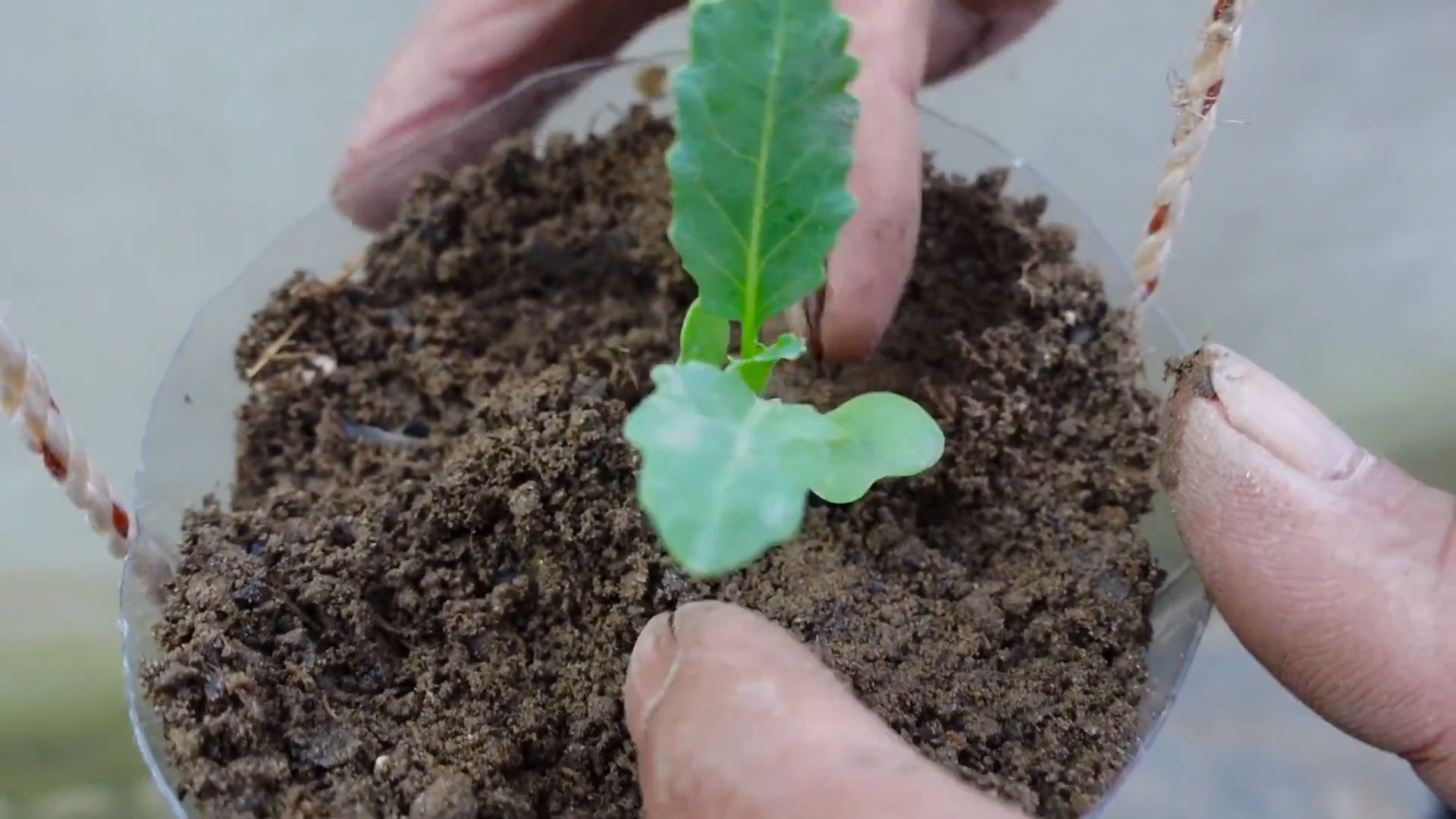
Conclusion
So, there you have it! Growing kohlrabi at home is not only achievable, but it’s also a deeply rewarding experience that puts fresh, delicious, and often hard-to-find produce right at your fingertips. Forget relying on limited grocery store selections or paying premium prices for organic kohlrabi; with a little effort and the tips we’ve shared, you can cultivate your own thriving kohlrabi patch.
Why is this DIY trick a must-try? Because it empowers you to control the quality of your food, reduces your carbon footprint by minimizing transportation, and connects you with the natural world in a tangible way. Imagine the satisfaction of harvesting your own kohlrabi, knowing exactly where it came from and how it was grown. Plus, homegrown kohlrabi often tastes significantly better than store-bought varieties, boasting a sweeter, more delicate flavor.
But the benefits don’t stop there. Growing your own kohlrabi allows for experimentation and customization. Want to try a different variety? Go for it! Purple Vienna, White Vienna, or even the giant Superschmelz – the choice is yours. You can also tailor your growing practices to your specific needs and preferences, opting for organic methods to ensure a pesticide-free harvest.
Consider companion planting to further enhance your kohlrabi’s growth and deter pests naturally. Marigolds, nasturtiums, and herbs like dill and rosemary are excellent choices. You can also experiment with different soil amendments to optimize nutrient availability and improve drainage.
For those living in colder climates, consider starting your kohlrabi seeds indoors a few weeks before the last expected frost. This will give your plants a head start and ensure a longer growing season. If you’re short on space, kohlrabi can even be grown in containers, making it a viable option for apartment dwellers and urban gardeners. Just be sure to choose a pot that’s at least 12 inches in diameter and provides adequate drainage.
Don’t be intimidated if you’re a beginner gardener. Kohlrabi is a relatively easy crop to grow, and with a little patience and attention, you’ll be enjoying a bountiful harvest in no time. The key is to provide your plants with plenty of sunlight, well-drained soil, and consistent moisture.
We wholeheartedly encourage you to give this DIY kohlrabi growing trick a try. It’s a fun, educational, and ultimately delicious way to connect with your food and enhance your gardening skills. Once you’ve harvested your first kohlrabi, we’re confident you’ll be hooked!
And most importantly, we want to hear about your experience! Share your photos, tips, and challenges in the comments below. Let’s build a community of kohlrabi enthusiasts and learn from each other’s successes and failures. Together, we can unlock the full potential of this versatile and nutritious vegetable. So, grab your seeds, get your hands dirty, and start growing your own kohlrabi today! You won’t regret it.
Frequently Asked Questions (FAQ)
What exactly is kohlrabi, and what does it taste like?
Kohlrabi, often called a German turnip, is a member of the cabbage family (Brassica oleracea). It’s characterized by its bulbous stem that grows above ground, with leaves sprouting from the top. The taste is often described as a cross between a turnip and a cabbage, but milder and sweeter. The texture is crisp and juicy, similar to an apple or a radish. Young, smaller kohlrabi bulbs tend to be the most tender and flavorful.
When is the best time to plant kohlrabi?
Kohlrabi is a cool-season crop, meaning it thrives in cooler temperatures. The best time to plant kohlrabi depends on your climate. In areas with mild winters, you can plant it in the fall for a winter harvest. In colder climates, plant kohlrabi in early spring, about 4-6 weeks before the last expected frost. You can also plant a second crop in late summer for a fall harvest. Avoid planting kohlrabi during the hottest months of summer, as high temperatures can cause the bulbs to become tough and bitter.
How much sunlight does kohlrabi need?
Kohlrabi needs at least 6 hours of direct sunlight per day to thrive. Choose a location in your garden that receives plenty of sunlight throughout the day. If you’re growing kohlrabi in containers, make sure to place them in a sunny spot. Insufficient sunlight can result in smaller bulbs and leggy growth.
What kind of soil is best for growing kohlrabi?
Kohlrabi prefers well-drained, fertile soil with a pH between 6.0 and 7.5. Amend your soil with compost or other organic matter to improve drainage and fertility. Avoid heavy clay soils, as they can retain too much moisture and lead to root rot. A slightly sandy loam is ideal.
How often should I water kohlrabi?
Kohlrabi needs consistent moisture to grow properly. Water your plants regularly, especially during dry periods. Aim to keep the soil consistently moist but not waterlogged. Mulching around your kohlrabi plants can help retain moisture and suppress weeds.
How do I fertilize kohlrabi?
Kohlrabi benefits from regular fertilization. Apply a balanced fertilizer, such as 10-10-10, at planting time. You can also side-dress your plants with compost tea or fish emulsion every few weeks during the growing season. Avoid over-fertilizing, as this can lead to excessive foliage growth at the expense of bulb development.
What are some common pests and diseases that affect kohlrabi?
Common pests that can affect kohlrabi include cabbage worms, aphids, and flea beetles. You can control these pests with organic insecticides, such as Bacillus thuringiensis (Bt) for cabbage worms and insecticidal soap for aphids and flea beetles. Common diseases that can affect kohlrabi include clubroot and black rot. To prevent these diseases, practice crop rotation and avoid planting kohlrabi in the same location year after year. Ensure good air circulation around your plants and avoid overhead watering.
When is kohlrabi ready to harvest?
Kohlrabi is typically ready to harvest 50-60 days after planting. Harvest the bulbs when they are about 2-3 inches in diameter. Larger bulbs can become tough and woody. To harvest, simply cut the bulb from the stem just above the soil line.
Can I eat the leaves of kohlrabi?
Yes, the leaves of kohlrabi are edible and nutritious. They can be eaten raw in salads or cooked like spinach or kale. Choose young, tender leaves for the best flavor and texture.
How do I store kohlrabi?
Store kohlrabi bulbs in the refrigerator for up to several weeks. Remove the leaves before storing, as they can draw moisture from the bulb. Wrap the bulbs in a plastic bag or container to prevent them from drying out.
Can I grow kohlrabi in containers?
Yes, kohlrabi can be grown in containers. Choose a pot that is at least 12 inches in diameter and provides adequate drainage. Use a high-quality potting mix and fertilize regularly. Make sure to place the container in a sunny location.
What are some ways to eat kohlrabi?
Kohlrabi can be eaten raw or cooked. Raw kohlrabi can be shredded and added to salads or used as a crudité with dips. Cooked kohlrabi can be steamed, roasted, sautéed, or added to soups and stews. It can also be pickled or fermented. The possibilities are endless!
Is kohlrabi good for you?
Yes, kohlrabi is a very nutritious vegetable. It is a good source of vitamin C, potassium, and fiber. It is also low in calories and fat. Adding kohlrabi to your diet can help boost your immune system, improve digestion, and promote overall health.

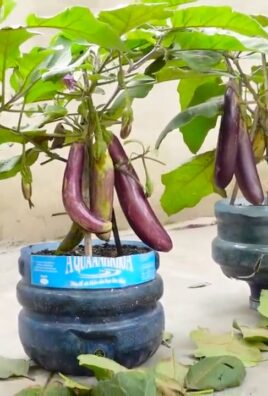
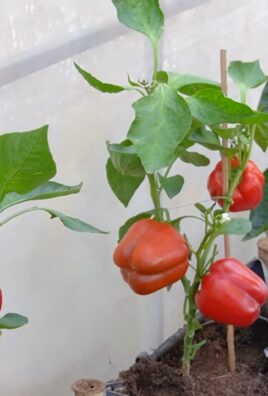
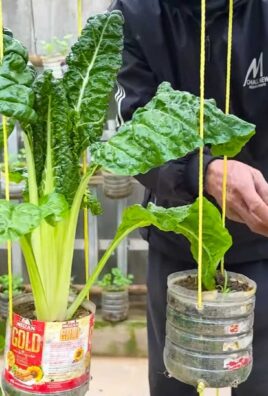
Leave a Comment